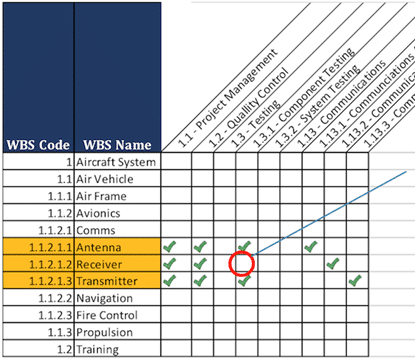
One of the pillars of every project is the Work Breakdown Structure (WBS) and the associated WBS dictionary. Whether you are a contractor presenting the project baseline or the client reviewing it, the WBS and WBS Dictionary are your Rosetta Stone for understanding how the different pieces of a project will ultimately come together.

The WBS is the hierarchical subdivision of the project based on deliverables. It is the actual structure that we are used to seeing and using to organize the project. It allows us to break down the scope into managaeble pieces and provides a reporting structure that we use for planning, performance monitoring and actual costs.
The WBS Dictionary
The WBS Dictionary, in addition to expanding the simple discription of the WBS elements, connects the WBS to the Statement of Work (SOW). The WBS dictionary is usually a spreadsheet that lists the WBS, the WBS element name, and a description of the work done in that element. A good dictionary will also have a field indicating which SOW paragraph is covered by that WBS element.


The Link Between WBS and SOW
The last column in the example shows how the lowest level elements of the WBS relate to the SOW. In the example, you can see that each element is related to different paragraphs in the SOW. This link shows that the project will plan, execute, and capture the actual project management costs associated with each individual element.
What does this link achieve?
Linking these two structures allows you to view your project in different dimensions, providing many reporting and analysis opportunities. It can quickly tell you whether you have everything covered in the SOW or are doing work in a WBS element that is not covered by the contract.
But that’s just the beginning. By looking at the relationships that exist between WBS elements, you can see how different SOW paragraphs are linked and whether that makes sense or not. In addition, performance and actual costs can be assigned to SOW paragraphs. The visibility of this is still valuable.
Conclusion
Used properly, the WBS dictionary becomes much more than a document describing work. It becomes a project kaleidoscope that allows you to view your project data in an infinite number of ways.
Understanding the WBS and the WBS Dictionary is essential to successfully managing a project. It provides a clear overview and in-depth understanding of how each part of the project comes together. It is a tool that should not be overlooked by project managers and stakeholders.
